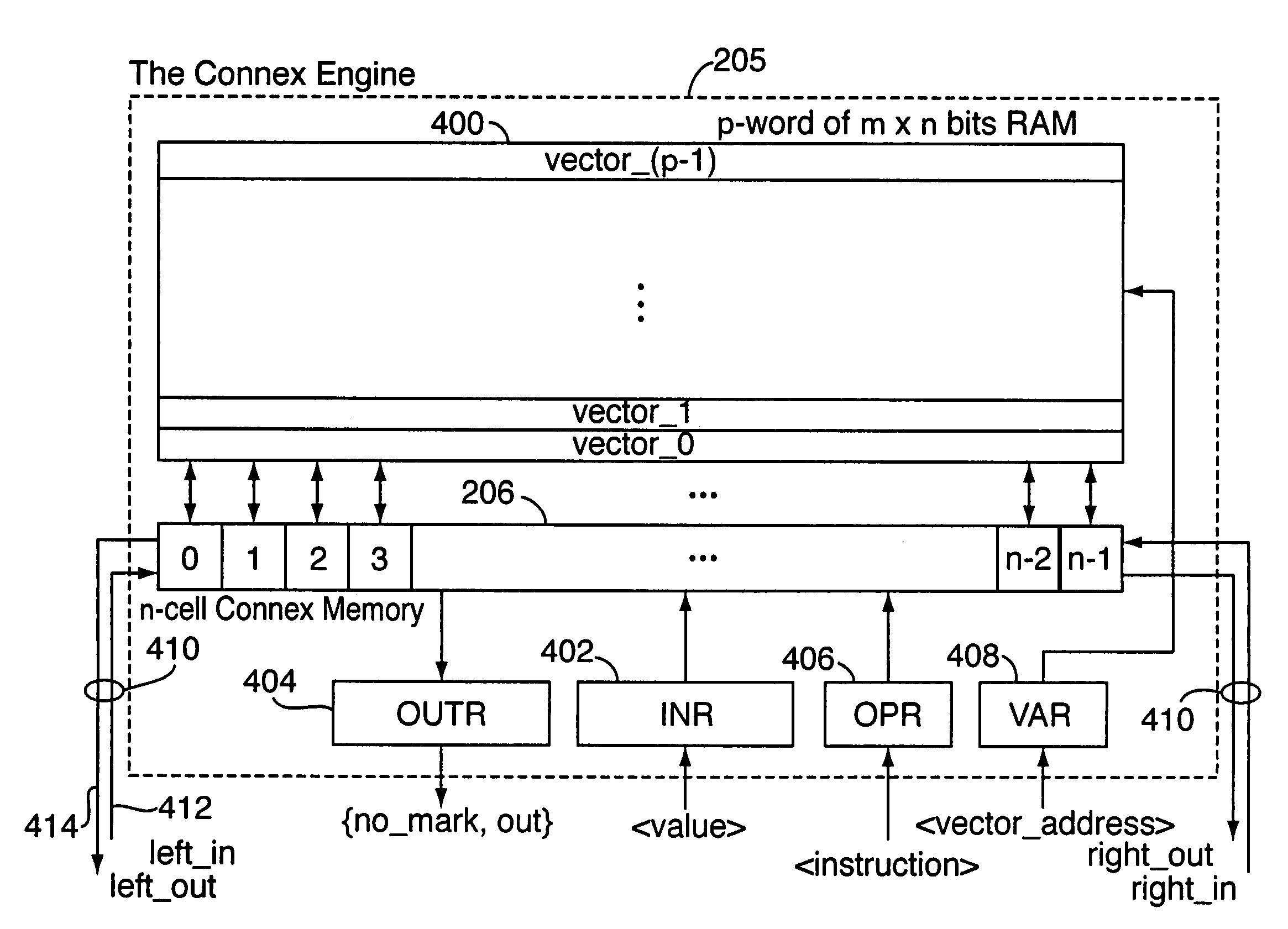Associative memory device
a technology of associative memory and data processing, which is applied in the direction of digital storage, instruments, computing, etc., can solve the problems of requiring additional work, working well, and generating this number is a costly operation
- Summary
- Abstract
- Description
- Claims
- Application Information
AI Technical Summary
Benefits of technology
Problems solved by technology
Method used
Image
Examples
Embodiment Construction
[0048]The CM is a physical support for storing strings of words each taking values from a finite set of memory symbols, each word augmented by ‘setting’ an additional bit, thereby marking the word with one of two states: marked or not marked. The term ‘memory symbol’ is interpreted herein to mean a fixedlength collection of consecutive bits, and whose length depends on the application and is not set a priori.
[0049]The structure of the present invention allows for the execution of all the CM commands in one clock cycle with a delay of approximately twice that of the delay typically encountered in current cache memory technology. The structure described herein is that of a stand-alone circuit, which can also be replicated in a more elaborate circuit. FIG. 1 depicts the general architecture of a memory engine 205 according to one embodiment of the present invention, as well as its operational relationship with both an outside controller 255 and a synchronizing clock circuit 256. It wil...
PUM
 Login to View More
Login to View More Abstract
Description
Claims
Application Information
 Login to View More
Login to View More - R&D
- Intellectual Property
- Life Sciences
- Materials
- Tech Scout
- Unparalleled Data Quality
- Higher Quality Content
- 60% Fewer Hallucinations
Browse by: Latest US Patents, China's latest patents, Technical Efficacy Thesaurus, Application Domain, Technology Topic, Popular Technical Reports.
© 2025 PatSnap. All rights reserved.Legal|Privacy policy|Modern Slavery Act Transparency Statement|Sitemap|About US| Contact US: help@patsnap.com



